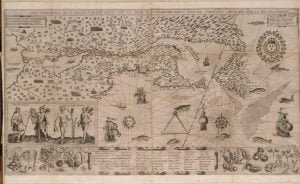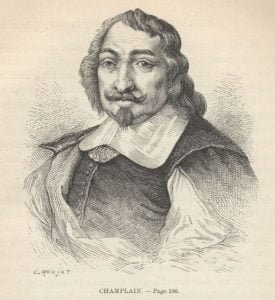The March on the Beach
Champlain says: ” Les sauvages cachèrent tous leurs canaux dans les bois, proche du rivage. Nous fimes par terre quelques quatre lieuës sur une plage de sable, ou je remarquai un pays fort agreable et beau, traversé de plusieurs petits ruisseaux, et deux petites rivières, qui se dechargent au susdit lac, et force etangs et prairies.” ” The Indians concealed all their canoes in the woods near the shore. We proceeded by land about four leagues over a sandy beach, where I observed a very agreeable and beautiful country, intersected by many small brooks and two small rivers which empty … Read more



